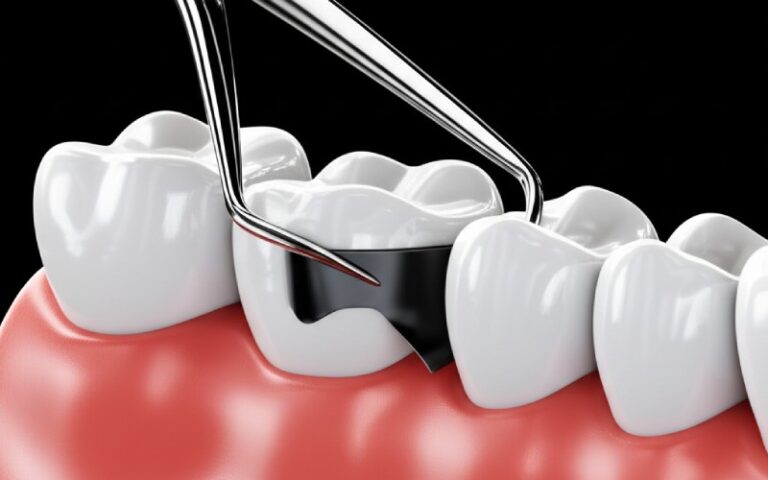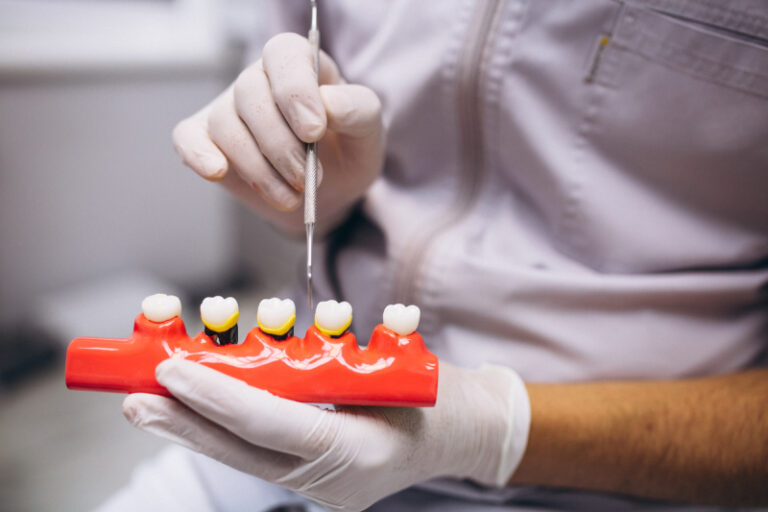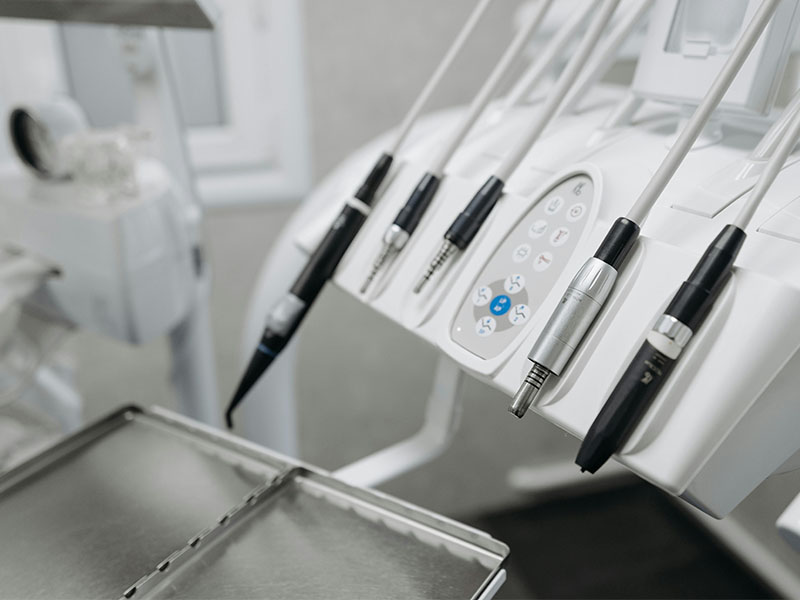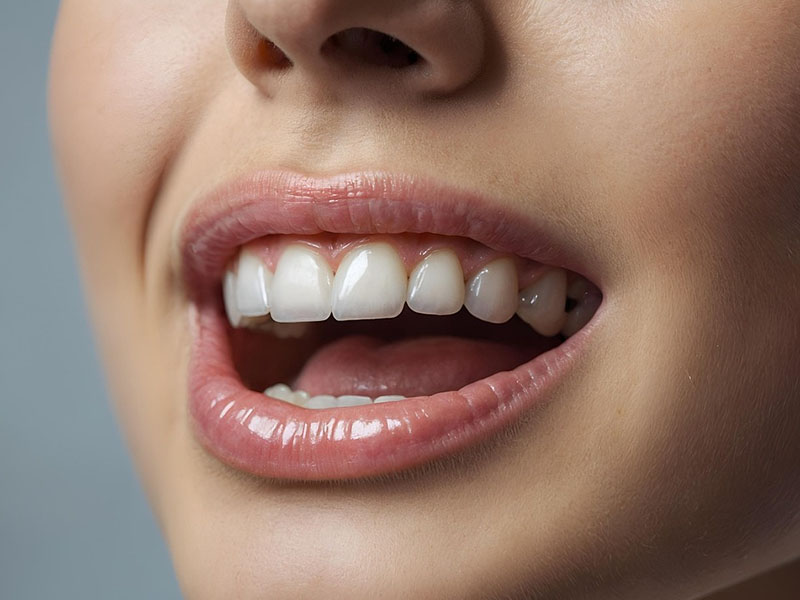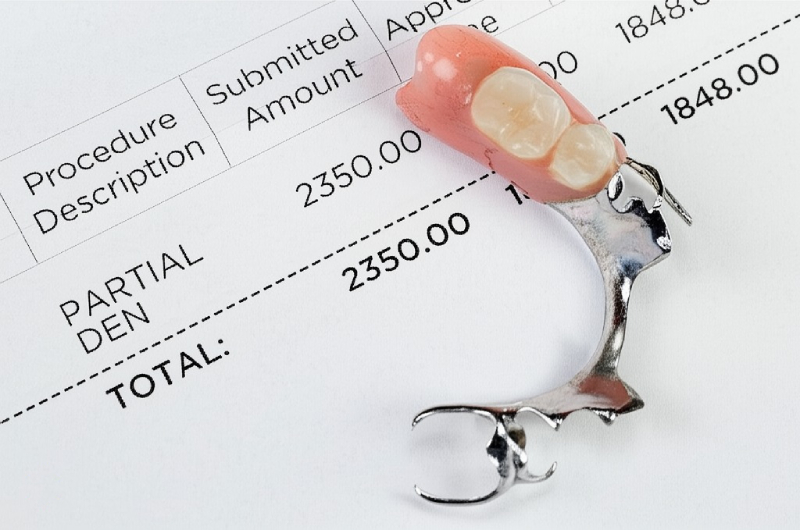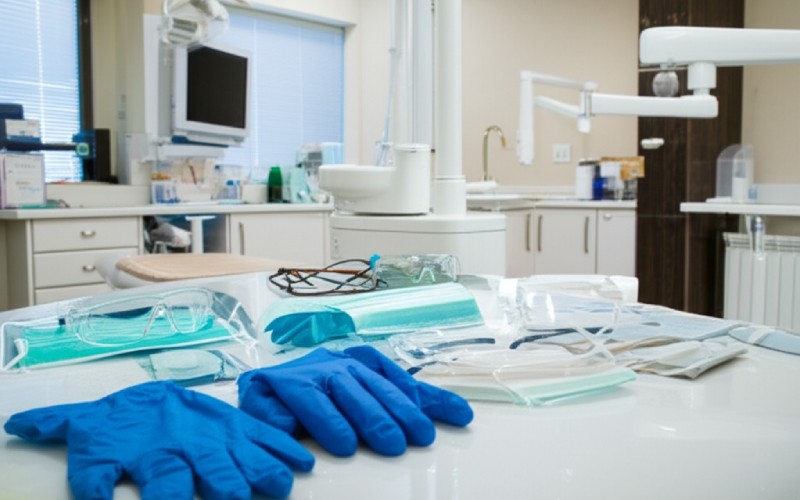
Dental OSHA Compliance Checklist: Your Complete Guide to Safety & Regulations
Running a dental practice is a lot to handle. You’re balancing patient care billing and leading your team so it’s easy to feel like you’re being pulled in a million directions. Then there’s OSHA. Just hearing the name Occupational Safety and Health Administration can make even an experienced practice manager nervous. The rules seem thick and confusing the stakes feel high and you just want to know one thing: “Are we doing everything right?”
If that sounds like you then you’re in the right spot. We get it. OSHA compliance isn’t just about dodging fines it’s about creating a truly safe place where your team can do their best work and your patients feel protected. It’s a promise you make to every single person who comes in.
This guide is here to explain everything in plain English and take the guesswork out of it. We’ll turn that mountain of rules into a clear checklist you can actually use. Don’t think of this as a scary rulebook but as your map to a safer more successful practice. Let’s walk through it together.
Table of Contents
Core OSHA Standards Every Dental Practice Must Adhere To
Before we get into the details of the checklist you need to get the main pillars of OSHA in a dental office. These aren’t just helpful tips they are the core standards that are the foundation for almost every safety rule in your practice.
A. The Bloodborne Pathogens Standard (29 CFR 1910.1030)
This is the big one for dentistry. The Bloodborne Pathogens (BBP) Standard exists to protect your team from germs in things like blood and saliva which might carry viruses like Hepatitis B (HBV) or HIV.
- Your Exposure Control Plan (ECP): This is your main guide for safety. Your ECP isn’t a document you just file and forget it’s a guide you’ll use all the time that spells out exactly how your office prevents and deals with exposure to germs. You have to review and update it every year or any time a new task changes the exposure risk. And it has to be easy for all your employees to get to.
- Hepatitis B Shot: You have to offer the Hepatitis B shot series to all at-risk employees within 10 days of hiring and you must pay for it. If an employee says no they have to sign a form saying they refuse. It’s their right to say no but it’s your job to offer it and have the paperwork to prove it.
- Universal Precautions & Safety Controls: This is the simple yet powerful idea that you must treat all human blood and certain body fluids as if they carry germs. In your office this means using engineering controls (the tools you use) and work practice controls (the way you do things).
- Engineering Controls: These are gadgets that remove the danger. Think sharps containers, needles with safety sheaths and systems that suck away nitrous oxide gas.
- Work Practice Controls: These are the methods you use to lower risk like washing your hands the right way and handling dirty instruments carefully.
- Sharps Safety and Injury Log: Every dental office needs a plan for sharps safety. This means using safer medical tools when you can and never recapping needles with two hands. You also must keep a Sharps Injury Log to write down any injuries from pokes or cuts from used sharps. This log helps you spot patterns and stop future accidents.
B. The Hazard Communication Standard (29 CFR 1910.1200 / GHS)
You work with a ton of chemicals—disinfectants, bonding agents, sterilizers and more. The Hazard Communication Standard (HazCom) makes sure your team knows exactly what they’re working with and how to stay safe. It’s all about their right to know.
- Safety Data Sheets (SDS): An SDS is like a detailed biography for a chemical. It tells you everything from its dangers to how to clean up a spill. You need an SDS for every hazardous chemical in your office and they must be easy for every employee to get to during their shift. A neat binder or a digital system for your SDSs is a must-have.
- Chemical List and Labels: You need a full list of all risky chemicals you use. On top of that every container from the big bottle from the maker to a small spray bottle must be labeled right according to the Globally Harmonized System (GHS). These GHS dental labels have pictures and warning words that make dangers easy to spot.
- Employee Training: You can’t just have the SDSs sitting on a shelf. You have to train your employees on the hazardous chemicals in their work area before they start and whenever a new chemical is brought in. They need to know how to read labels and SDSs and what they need to do to protect themselves.
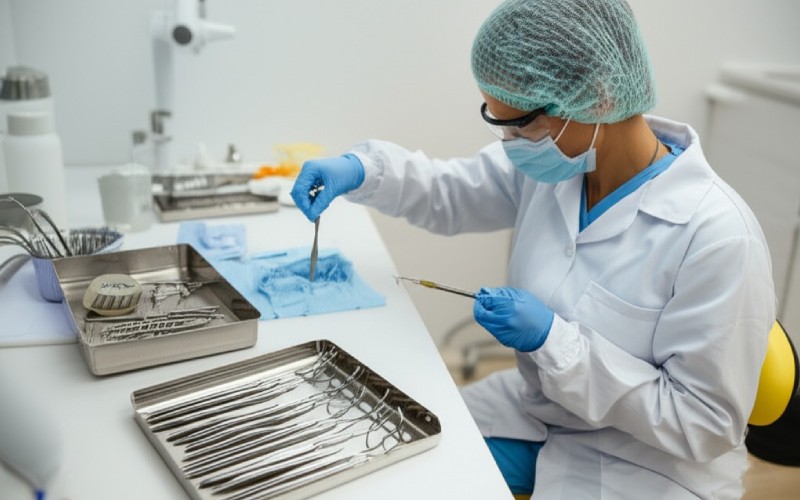
C. The Personal Protective Equipment (PPE) Standard (29 CFR 1910.132-138)
PPE is the armor your team wears to fight germs and dangers every day. It’s your final line of defense after you’ve set up your safety controls and work methods.
- Figuring Out PPE Needs: You must do a formal check for dangers in your practice to decide what PPE is needed for each task. This isn’t a one-size-fits-all deal. A dental assistant cleaning tools needs different PPE than someone at the front desk.
- Picking, Using, and Caring for PPE: Based on your check you have to provide the right PPE—gloves, masks, safety glasses with side shields, face shields, and gowns—and your employees shouldn’t have to pay for it. You’re also in charge of making sure it fits right and is either thrown away or cleaned correctly.
- Training on PPE: Employees must be trained on when to use PPE what kind to use how to put it on and take it off and what it can’t do. For example they need to know a surgical mask isn’t the same as an N95 respirator.
D. The General Duty Clause (OSHA Act of 1970, Section 5(a)(1))
OSHA can’t make a specific rule for every single danger out there. That’s what the General Duty Clause is for. This rule says employers must give their workers a place to work that is “free from recognized hazards that are causing or are likely to cause death or serious physical harm.”
This is OSHA’s catch-all for problems that don’t have their own standard. In a dental office this often covers:
- Ergonomics: Protecting your team from muscle and joint problems caused by weird postures and doing the same motions over and over.
- Workplace Violence Prevention: Having a plan and training to handle the risk of violence from patients or others.
- Safe Patient Handling: Making sure you have the right ways to move or help patients.
Essential Elements of Your Dental OSHA Compliance Checklist
Now let’s turn those main standards into a simple checklist. Use this to do a walk-through of your office or check up on your own safety programs.
A. Infection Control
[ ] Hand Hygiene: Sinks have soap and paper towels. Hand sanitizer with alcohol is available. Staff is trained on how to wash their hands right. [ ] Instrument Sterilization: There’s a clear “dirty” area and a “clean” area in the sterilization room. Your autoclave is regularly checked with spore testing and you keep a log of the results. Sterilization steps are written down and followed. [ ] Surface Cleaning: All surfaces that get touched during treatment are cleaned and disinfected with a government-approved disinfectant after every patient. [ ] Dental Unit Waterline (DUWL) Care: You have a written plan for cleaning and testing your waterlines to meet CDC and ADA standards for safe drinking water. This stops slimy layers of bacteria like Legionella from growing. [ ] Medical Waste Handling: Biohazard bags and sharps containers are labeled and colored right and they’re in every treatment room. You have a contract with a company approved to haul medical waste and you separate your dental waste correctly.
B. Safety & Emergency Planning
[ ] Emergency Action Plan (EAP): A written EAP is in place and easy to find. It lays out what to do for fires medical emergencies and other bad situations. [ ] Fire Safety: Fire extinguishers are easy to see and get to and they’re checked every year. Staff knows where they are and how to use them. Exit paths are clearly marked and never blocked. [ ] Eyewash Stations: An eyewash station that meets national safety standards is ready and within a 10-second walk from any chemical area. You test it every week to make sure it works and the path to it is clear. [ ] First Aid Kits: A well-stocked first aid kit is on hand for employees. [ ] Electrical Safety: All electrical gear is in good shape. Cords aren’t worn out and you don’t use extension cords for permanent power. Special outlets that prevent shock (GFCIs) are used near sinks. [ ] Radiation Safety: X-ray machines are checked based on your state’s rules. Staff wears radiation monitoring badges if needed and you have lead aprons for patients. You store lead aprons the right way (hung up not folded) so they don’t crack. [ ] Nitrous Oxide Systems: You use a good scavenging system to limit the nitrous oxide in the air. The system is checked and maintained often for leaks.
C. Employee Training & Paperwork
[ ] New & Yearly OSHA Training: Every new employee gets OSHA training before they start a job with possible exposure. All employees get a refresher training every year. [ ] Training Records: You keep detailed training records for every employee including the date what was covered and the trainer’s name. You have to keep these for at least three years. [ ] OSHA 300 Log: If your office has more than 10 employees you must keep an OSHA 300 Log to track work-related injuries and sickness. [ ] Medical Records: Employee medical records (like Hepatitis B shot status and what happened after an exposure) are kept private and separate from other employee files. [ ] Exposure Control Plan (ECP) Access: All employees know where the ECP is and can look at it anytime.
D. Office & Equipment Checks
[ ] Ventilation: Your office has good airflow especially in the lab and sterilization areas where you use chemicals. [ ] Amalgam Separator: An amalgam separator is installed and taken care of based on EPA rules to keep mercury out of the water system. [ ] Sharps Containers: Containers won’t get poked through are leak-proof and are labeled right. You replace them before they get too full (never more than ¾ full). [ ] General Tidiness: The office is clean and neat. Floors are free of junk and things to trip over.
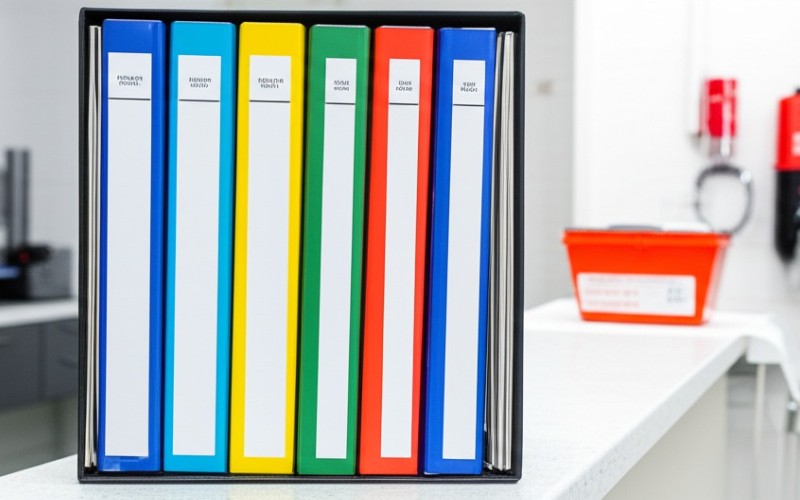
Implementing and Maintaining Ongoing Compliance
OSHA compliance isn’t a one-time task it’s something you do all the time until it’s just part of how your office works.
- Pick an OSHA Compliance Officer: Give one person—like the office manager or a lead dental assistant—the job and the power to be in charge of the safety program. This person becomes the expert your team can go to.
- Do Regular Self-Checks: Don’t wait for an OSHA inspector to find something wrong. Use the checklist above to do regular walk-throughs of your office. A practice inspection can be really helpful for finding problems before they become violations.
- Make a Complete OSHA Manual: Put all your written plans (ECP, HazCom, EAP, etc.) training records and logs into one organized dental OSHA compliance manual. This becomes your main hub for safety.
- Stay in the Loop: Rules change and fines are updated every year. Sign up for newsletters from OSHA the ADA and your state dental board to stay informed.
- What to Do During an OSHA Inspection: If an inspector shows up stay calm and professional. Ask to see their ID. Pick one person (your compliance officer is a good choice) to walk with them. Be helpful and answer questions honestly but don’t give more information than they ask for. Give them the documents they want to see.
Common OSHA Violations in Dental Practices (and How to Avoid Them)
Knowing where other offices mess up is the best way to stay on track. According to OSHA’s own data these are some of the most common violations in dental and healthcare offices.
- No Written Exposure Control Plan: This is low-hanging fruit for an inspector.
- How to Avoid: Write your ECP. Use a template from the ADA or a compliance company. Most importantly review and update it every single year.
- Bad Hazard Communication Program: Missing SDSs, unlabeled spray bottles and no employee training are common problems.
- How to Avoid: Pick someone to manage your SDS binder or digital file. Do a full chemical check. Label every single container and write down all employee HazCom training.
- Wrong Use or Care of PPE: Employees not wearing safety glasses during treatments or using the wrong kind of gloves.
- How to Avoid: Do a danger check. Train your team on why they need certain PPE for certain jobs. Make sure you give them the right gear and make sure they use it.
- Not Enough Employee Training: Many offices do the first training but forget the required yearly refresher.
- How to Avoid: Put it on your calendar! Schedule your annual OSHA training for the whole team and keep good records. Studies show that well-trained employees are 50% less likely to have an accident.
- Failure to Keep OSHA Records: A missing Sharps Injury Log or an old OSHA 300 Log.
- How to Avoid: Create a simple system for your paperwork. Use digital folders or a clearly marked binder. Give someone the job of keeping these logs up to date.
The money risk is real. A “Serious” violation can cost you over $16,000. A “Willful” or “Repeated” violation can jump to over $160,000. These aren’t just numbers they’re real threats to the financial health of your practice.
Benefits of Proactive Dental OSHA Compliance
Just seeing compliance as a cost is a mistake in the long run. A proactive safety culture pays off in ways that are much bigger than just avoiding a fine.
- Better Employee Safety & Happiness: When your team sees you care about their health they feel valued and respected. This means fewer people quit and it creates a positive place to work.
- Lower Risk of Fines & Penalties: This is the obvious one but being proactive is way cheaper than not being compliant which can lead to fines legal bills and higher insurance costs.
- Protection from Getting Sued: A well-documented safety program is your best defense if a workplace injury or lawsuit happens.
- Improved Patient Trust: Patients notice a clean organized and safe office. It tells them they’re getting care from a professional and careful practice.
- More Efficient Office: Good safety rules often lead to better ways of working. A well-organized sterilization center for example is not only safer but it also runs more smoothly.
Resources for Dental OSHA Compliance
You don’t have to do this by yourself. There are lots of great resources out there to help you on your compliance path.
- OSHA Website: OSHA’s official site has pages just for dentistry and healthcare.
- State Dental Associations: Your state association is a great place to get information for your local rules.
- Centers for Disease Control and Prevention (CDC): The CDC’s Guidelines for Infection Control in Dental Health-Care Settings is the gold standard that guides many of OSHA’s rules.
- American Dental Association (ADA): The ADA gives its members lots of resources including templates and guides.
- Professional Compliance Services: For offices that want expert help companies that specialize in dental OSHA compliance can offer training manuals and practice inspections.
Your Commitment to a Safe Dental Environment
Getting a handle on OSHA compliance can feel like a huge job but it doesn’t have to be. By breaking it down into these easy steps and focusing on the main ideas you can build a safety program that truly protects your team and your practice.
Think of it as a promise. A promise to your staff’s health your patients’ safety and the professional level of your practice. It’s a journey not a destination.
Start today. Use this checklist to take an honest look at your practice. Find one thing to improve and take the first step. You’ve got this.

